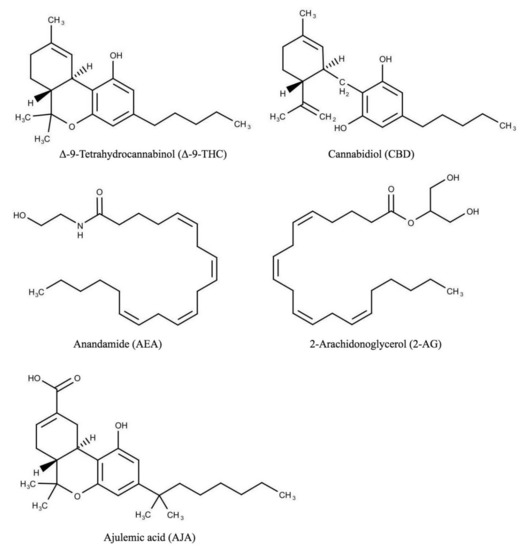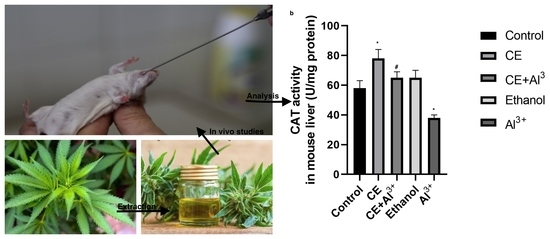Monthly Archives: August 2021
Cannabinoids for skin diseases and hair regrowth
 “The use of cannabis for skin diseases and hair regrowth is at the preliminary stage.
“The use of cannabis for skin diseases and hair regrowth is at the preliminary stage.
Legalization: Many countries have approved cannabis for medical use; however, four countries Canada, Uruguay, South Africa, and Georgia have legalized it for both medical and recreational purposes.
The endocannabinoid system: The endocannabinoid system may maintain skin homeostasis; two notable endocannabinoids include 2-Arachidonoylglycerol (2-AG) and N-arachidonoylethanolamine (AEA).
Routes of administration and pharmacokinetics: Topical cannabinoids can avoid the first-pass metabolism and reduce respiratory side effects; however, the high hydrophobicity of cannabinoids may hinder percutaneous absorption.
Skin disorders and hair growth: Human clinical studies suggest that cannabinoids may be used in eczema, acne, pruritus, and systemic sclerosis treatment. Cannabidiol (CBD) may enhance hair growth via multiple mechanisms.
Safety: Topical cannabis may cause mild side effects such as pruritus, burning, erythema, and stinging; they are relatively safer than inhalation and oral cannabis. Cannabis use may be associated with allergic symptoms and reduced immune response to live vaccination.
Cannabinoids in practice: Despite growing interest, dermatologists should be cautious prescribing cannabinoids due to insufficient clinical data on both efficacy and safety.”
https://pubmed.ncbi.nlm.nih.gov/34363728/
https://onlinelibrary.wiley.com/doi/10.1111/jocd.14352
The Therapeutic Potential of Cannabis in Counteracting Oxidative Stress and Inflammation
 “Significant growth of interest in cannabis (Cannabis sativa L.), especially its natural anti-inflammatory and antioxidative properties, has been observed recently. This narrative review aimed to present the state of the art of research concerning the anti-inflammatory activity of all classes of cannabinoids published in the last five years. Multimodal properties of cannabinoids include their involvement in immunological processes, anti-inflammatory, and antioxidative effects. Cannabinoids and non-cannabinoid compounds of cannabis proved their anti-inflammatory effects in numerous animal models. The research in humans is missing, and the results are unconvincing. Although preclinical evidence suggests cannabinoids are of value in treating chronic inflammatory diseases, the clinical evidence is scarce, and further well-designed clinical trials are essential to determine the prospects for using cannabinoids in inflammatory conditions.”
“Significant growth of interest in cannabis (Cannabis sativa L.), especially its natural anti-inflammatory and antioxidative properties, has been observed recently. This narrative review aimed to present the state of the art of research concerning the anti-inflammatory activity of all classes of cannabinoids published in the last five years. Multimodal properties of cannabinoids include their involvement in immunological processes, anti-inflammatory, and antioxidative effects. Cannabinoids and non-cannabinoid compounds of cannabis proved their anti-inflammatory effects in numerous animal models. The research in humans is missing, and the results are unconvincing. Although preclinical evidence suggests cannabinoids are of value in treating chronic inflammatory diseases, the clinical evidence is scarce, and further well-designed clinical trials are essential to determine the prospects for using cannabinoids in inflammatory conditions.”
https://www.mdpi.com/1420-3049/26/15/4551

Myrcene-What Are the Potential Health Benefits of This Flavouring and Aroma Agent?
“Myrcene (β-myrcene) is an abundant monoterpene which occurs as a major constituent in many plant species, including hops and cannabis. It is a popular flavouring and aroma agent (food additive) used in the manufacture of food and beverages. This review aims to report on the occurrence, biological and toxicological profile of β-myrcene. The main reported biological properties of β-myrcene-anxiolytic, antioxidant, anti-ageing, anti-inflammatory, analgesic properties-are discussed, with the mechanisms of activity. Here we also discuss recent data regarding the safety of β-myrcene. Overall, β-myrcene has shown promising health benefits in many animal studies. However, studies conducted in humans is lacking. In the future, there is potential for the formulation and production of non-alcoholic beers, functional foods and drinks, and cannabis extracts (low in THC) rich in β-myrcene.”
“β-Myrcene characteristically gives cannabis strains a mildly sweet flavour profile and provides scent notes that are spicy, earthy and musky. Cannabis strains which contain high concentrations of myrcene (>0.5% myrcene), are likely to induce sedative qualities (“couch-lock effect”), which are classically attributed to Cannabis indica Lam (a synonym of C. sativa L.) strains. On the other hand, strains low in β-myrcene (<0.5%) are likely to induce a more energic “high”.β-Myrcene reported biological activities include analgesic, sedative, antidiabetic, antioxidant, anti-inflammatory, antibacterial, and anticancer effects.”
https://www.frontiersin.org/articles/10.3389/fnut.2021.699666/full
Anti-depressant effects of ethanol extract from Cannabis sativa (hemp) seed in chlorpromazine-induced Drosophila melanogaster depression model
“Context: Depression is a severe mental illness caused by a deficiency of dopamine and serotonin. Cannabis sativa L. (Cannabaceae) has long been used to treat pain, nausea, and depression.
Objective: This study investigates the anti-depressant effects of C. sativa (hemp) seed ethanol extract (HE) in chlorpromazine (CPZ)-induced Drosophila melanogaster depression model.
Results: The behavioural patterns of individual flies were significantly reduced with 0.1% CPZ treatment. In contrast, combination treatment of 1.5% HE and 0.1% CPZ significantly increased subjective daytime activity (p < 0.001) and behavioural factors (p < 0.001). These results correlate with increased transcript levels of dopamine (p < 0.001) and serotonin (p < 0.05) receptors and concentration of dopamine (p < 0.05), levodopa (p < 0.001), 5-HTP (p < 0.05), and serotonin (p < 0.001) compared to those in the control group.
Discussion and conclusions: Collectively, HE administration alleviates depression-like symptoms by modulating the circadian rhythm-related behaviours, transcript levels of neurotransmitter receptors, and neurotransmitter levels in the CPZ-induced Drosophila model. However, additional research is needed to investigate the role of HE administration in behavioural patterns, reduction of the neurotransmitter, and signalling pathways of depression in a vertebrate model system.”
https://pubmed.ncbi.nlm.nih.gov/34362287/
“CPZ induces depression-like symptoms, such as changes in behavioural patterns, transcription levels of neurotransmitter receptors, and depression-related neurotransmitter levels in the D. melanogaster depression model. However, administration of HE restores the circadian rhythms, improves locomotor activity, and significantly increases transcription levels of dopamine and serotonin receptors in the depression-induced flies. Based on these findings, we can conclude that HE alleviates depression-like symptoms by increasing the levels of serotonin and dopamine receptors and dopamine, L-DOPA, 5-HTP, and serotonin levels in the brain.”
https://www.tandfonline.com/doi/full/10.1080/13880209.2021.1949356

Antioxidant and Angiotensin I-Converting Enzyme (ACE) Inhibitory Peptides Obtained from Alcalase Protein Hydrolysate Fractions of Hemp ( Cannabis sativa L.) Bran
 “Proteins from hemp bran (HPB), a byproduct of the hemp seed food-processing chain, were chemically extracted, hydrolyzed by Alcalase, and separated by membrane ultrafiltration into four fractions (MW <1, 1-3, 3-5, and >5 kDa).
“Proteins from hemp bran (HPB), a byproduct of the hemp seed food-processing chain, were chemically extracted, hydrolyzed by Alcalase, and separated by membrane ultrafiltration into four fractions (MW <1, 1-3, 3-5, and >5 kDa).
The antioxidant and antihypertensive properties of the initial extract and the fractions were evaluated by in vitro assays for their ability to scavenge radical species, bind with metal ions, reduce ferric ions, and inhibit angiotensin-converting enzyme (ACE) activity.
The hydrolysate was strongly antioxidant and ACE-inhibiting; the most bioactive peptides were further concentrated by ultrafiltration. Of the 239 peptides identified, 47 (12 antioxidant and 35 ACE-inhibitory) exhibited structural features correlated with the specific bioactivity.
These results highlight the promise of hydrolysate and size-based HPB fractions as natural functional ingredients for the food or pharmaceutical industry.”
“In conclusion, this study highlights the potential use of HPB hydrolysate and fractions as multifunctional ingredients for the development of new healthy foods or for the pharmaceutical industry. ”
https://pubs.acs.org/doi/10.1021/acs.jafc.1c01487

A pilot safety, tolerability and pharmacokinetic study of an oro-buccal administered cannabidiol-dominant anti-inflammatory formulation in healthy individuals: a randomized placebo-controlled single-blinded study
 “Background: The cannabis plant presents a complex biochemical unit of over 500 constituents of which 70 or more molecules have been classified as cannabinoids binding to cannabinoid receptors. The study aimed to investigate the safety, tolerability, and preliminary pharmacokinetics of a nanoparticle CBD formulation.
“Background: The cannabis plant presents a complex biochemical unit of over 500 constituents of which 70 or more molecules have been classified as cannabinoids binding to cannabinoid receptors. The study aimed to investigate the safety, tolerability, and preliminary pharmacokinetics of a nanoparticle CBD formulation.
Results: The study met the primary outcomes of safety, tolerability, and preliminary pharmacokinetics of a standardized CBD-dominant anti-inflammatory extract for oro-buccal administration. Bioavailability of a 6 mg and 18 mg dose of CBD (median IQR) was 0.87 and 8.9 ng h mL-1, respectively. The maximum concentration of CBD for the low and high doses administered once per day occurred at 60 min for both concentrations. The median half-life of the 6 mg and 18 mg CBD dose was 1.23 and 5.45 h, respectively. The apparent clearance of CBD was 115 and 34 L min-1 for a 6 mg and 18 mg dose, respectively.
Conclusion: The oro-buccal nanoparticle formulation achieved plasma concentrations that were largely comparable to other commercial and investigated formulations relative to the concentrations administered. Moreover, there were no reports of adverse effects associated with unfavorable inflammatory sequalae.”
https://link.springer.com/article/10.1007%2Fs10787-021-00859-y
The Effects of Cannabis sativa L. Extract on Oxidative Stress Markers In Vivo
 “In recent decades, a lot of attention has been paid to Cannabis sativa L. due to its useful applications, including in fibers, oil, food for humans and animals, and therapeutics.
“In recent decades, a lot of attention has been paid to Cannabis sativa L. due to its useful applications, including in fibers, oil, food for humans and animals, and therapeutics.
The present study aimed to determine antioxidant activity of cannabinoids in Cannabis sativa L. in vivo, evaluating the possible antioxidative effect of Cannabis sativa L. extract (CE) on malondialdehyde (MDA) and glutathione (GSH) concentrations as well as on catalase (CAT) activity in BALB/c mice.
The findings in vivo indicate that Cannabis sativa L. is a good source of natural antioxidants and can be used in the management of oxidative stress.”
https://pubmed.ncbi.nlm.nih.gov/34357019/
https://www.mdpi.com/2075-1729/11/7/647

Association Between Smoking Cannabis and Quitting Cigarettes in a Large American Cancer Society Cohort
 “Background: Cannabis use is increasing, including among smokers, an at-risk population for cancer. Research is equivocal on whether using cannabis inhibits quitting cigarettes. The current longitudinal study investigated associations between smoking cannabis and subsequently quitting cigarettes.
“Background: Cannabis use is increasing, including among smokers, an at-risk population for cancer. Research is equivocal on whether using cannabis inhibits quitting cigarettes. The current longitudinal study investigated associations between smoking cannabis and subsequently quitting cigarettes.
Results: Adjusted cigarette quitting rates at follow-up did not differ significantly by baseline cannabis smoking status [never 36.2%, 95% confidence interval (CI), 34.5%-37.8%; former 34.1%, CI, 31.4%-37.0%; recent 33.6%, CI, 30.1%-37.3%], nor by frequency of cannabis smoking (low 31.4%, CI, 25.6%-37.3%; moderate 36.7%, CI, 30.7%-42.3%; high 34.4%, CI, 28.3%-40.2%) among recent baseline cannabis smokers. In cross-sectional analyses conducted at follow-up the proportion of cigarette smokers intending to quit smoking cigarettes in the next 30 days did not differ by cannabis smoking status (p=0.83).
Conclusions: Results do not support the hypothesis that cannabis smoking inhibits quitting cigarette smoking among adults.”
https://pubmed.ncbi.nlm.nih.gov/34348959/
“Results do not support the hypothesis that cannabis smoking inhibits quitting cigarette smoking among adults.” https://cebp.aacrjournals.org/content/early/2021/08/04/1055-9965.EPI-20-1810
Risk and benefit of cannabis prescription for chronic non-cancer pain
 “Objectives: We investigated whether cannabis usage was associated with reduced opioid usage, and the rates of opioid and cannabis use disorders among chronic pain patients who had been prescribed medical cannabis.
“Objectives: We investigated whether cannabis usage was associated with reduced opioid usage, and the rates of opioid and cannabis use disorders among chronic pain patients who had been prescribed medical cannabis.
Results: Of the 100 participants aged 18-70 years (compliance 67% (aged >40) and 33% (aged ≤ 40y)), 76 ever used opioids. Of them, 93% decreased or stopped opioids following cannabis initiation. Ten patients (10%), 17.4% of the ≤40 y age group, met the criteria for cannabis use disorder. Compared to those who did not meet the criteria, their lifetime depression was higher (80% vs. 43.2%, respectively, P=.042), and they were less educated (12.2 ± 0.6y vs. 13.5 ± 2.1y, p = 0.05).
Conclusions: Cannabis usage was associated with reduced opioid usage. The prevalence of cannabis use disorder was high among the younger participants who also had a lower study compliance rate, suggesting the higher actual prevalence of cannabis use disorder. While medical cannabis may help reduce opioid use in chronic non-cancer pain patients, younger age, depression, and other risk factors should be carefully evaluated before cannabis is prescribed.”
“Cannabis usage was associated with reduced opioid usage.”
https://www.tandfonline.com/doi/abs/10.1080/10550887.2021.1956673?journalCode=wjad20

 “Oral ulcer is a common oral inflammatory lesion accompanied by severe pain but with few effective treatments. Cannabidiol (CBD) is recently emerging for its therapeutic potential in a range of diseases, including inflammatory conditions and cancers.
“Oral ulcer is a common oral inflammatory lesion accompanied by severe pain but with few effective treatments. Cannabidiol (CBD) is recently emerging for its therapeutic potential in a range of diseases, including inflammatory conditions and cancers.